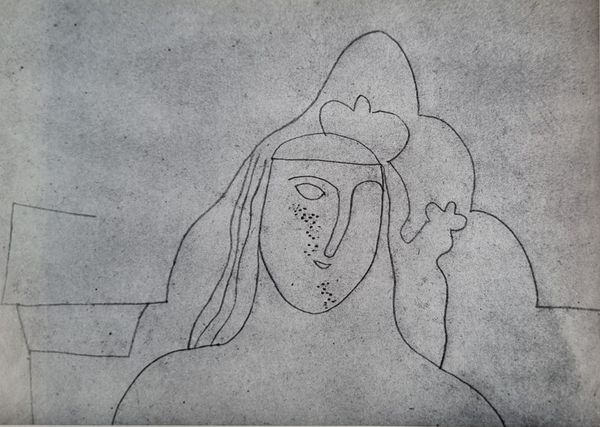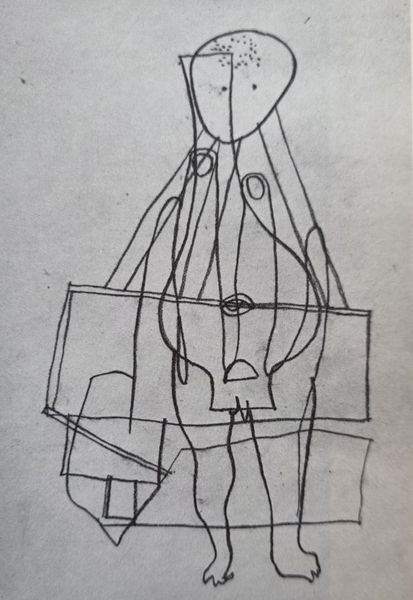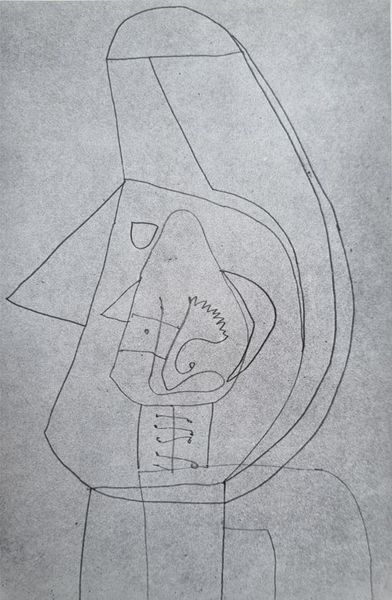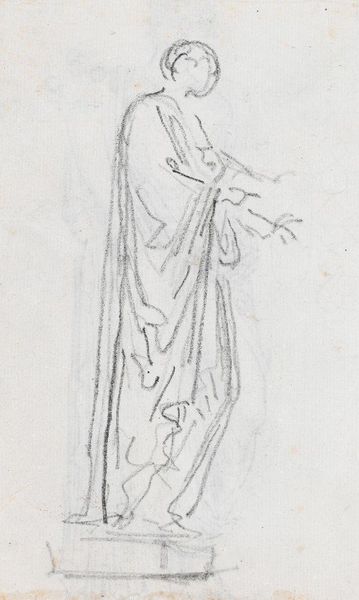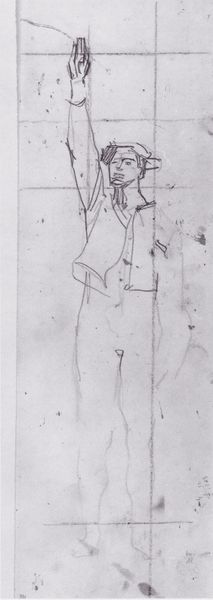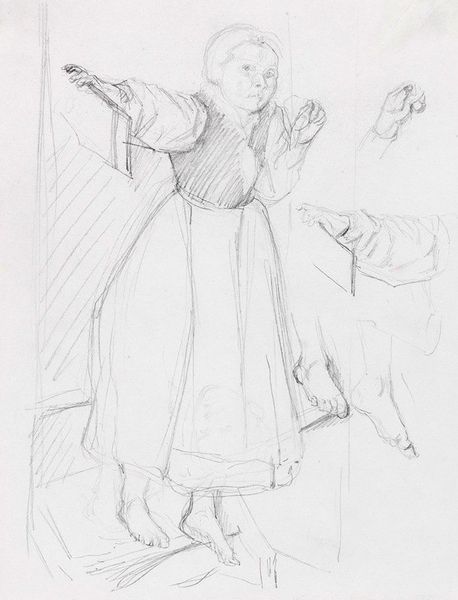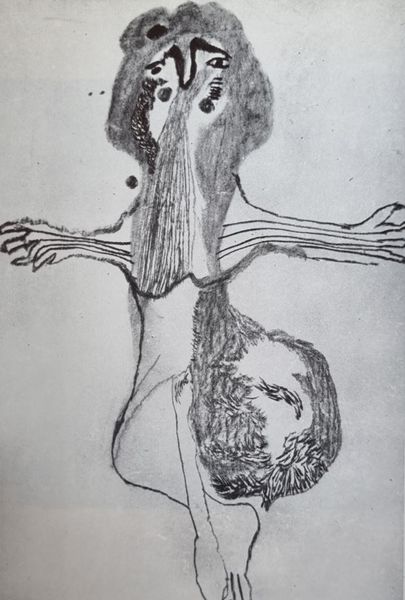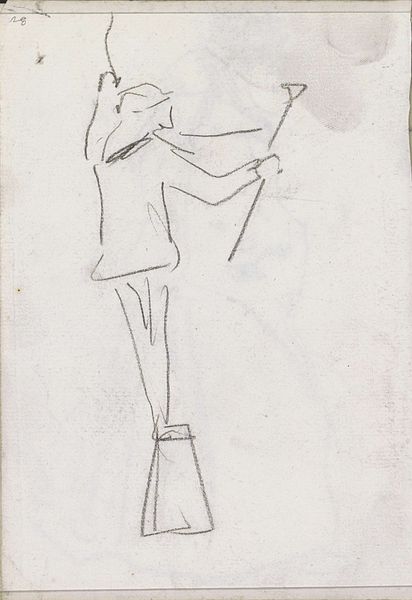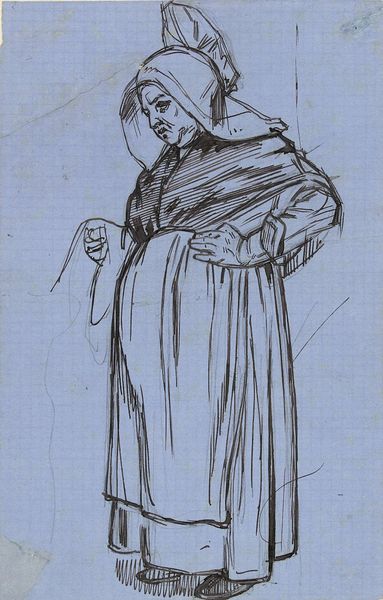
drawing, pencil
#
portrait
#
drawing
#
imaginative character sketch
#
light pencil work
#
incomplete sketchy
#
figuration
#
personal sketchbook
#
idea generation sketch
#
character sketch
#
geometric
#
pencil
#
sketchbook drawing
#
fashion sketch
#
sketchbook art
#
modernism
#
initial sketch
Copyright: Public domain
Curator: The first impression this drawing gives me is one of tenderness, despite its stark simplicity. The lines are minimal, yet the form of the mother holding a child is immediately recognizable and affecting. Editor: This is Vajda Lajos's "Madonna," created in 1937, rendered in pencil. Look closely, and you can appreciate the economical means through which he achieves the representation. You get a sense that the materiality almost dissolves to produce the ethereal, the idea of mother more than mother. Curator: I see that tension as well. The figure’s face is mask-like, almost geometric, pulling from older iconographic traditions even as it reduces those signifiers to their barest forms. It becomes less about a specific Madonna and Child, and more a meditation on universal themes of motherhood, care, and perhaps even loss, given the unsettling stillness. Editor: Loss certainly resonates when thinking about Vajda’s biography and his tragic fate in the Holocaust. Thinking materially, I notice the evident lack of shading. This pushes me to speculate about production; this pencil sketch is far more evocative than many paintings and sculptures which employ many means to construct meaning. What were Vajda’s motivations? Was this one of several drafts in the service of refining a symbol or archetype? Curator: Indeed, these sketches acted like symbolic experiments for Vajda. Notice how the stark lines reference earlier Christian iconography while moving toward abstraction, anticipating later Modernist expressions of spirituality, even artists like Agnes Martin. It shows the enduring strength of the Madonna as an archetypal image. Editor: The rawness almost makes it feel vulnerable, perhaps intentionally stripping away the typical adornments, literally and figuratively, usually associated with this figure in religious and art history. I think we must consider the conditions that allowed for Vajda to take the image of motherhood itself back to nearly primordial conditions using very little. This makes me appreciate the force with which artistic intentions make humble materials speak volumes. Curator: Looking at it now, I find it is the very emptiness around the figures that draws me in – as though grief has stripped away the unnecessary, and what remains is love and a potent essence of cultural memory. Editor: I now see this image as not just about what the artist made with his hands, but the image which is created in your mind after you have looked at it. Very well put.
Comments
No comments
Be the first to comment and join the conversation on the ultimate creative platform.

